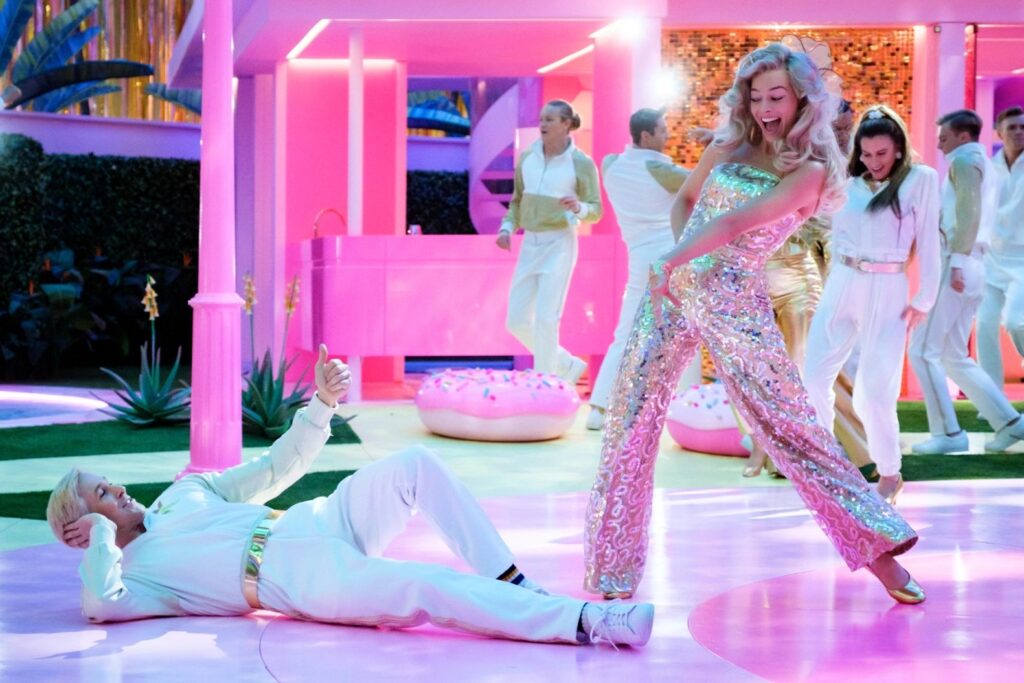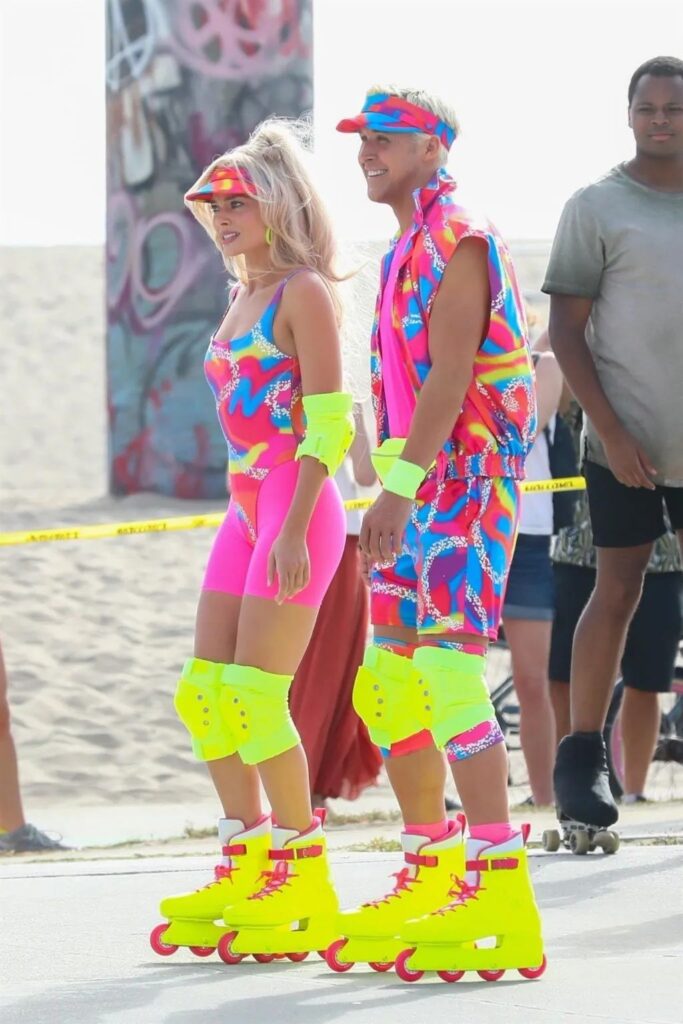BARBARA Millicent Roberts or Barbie debuted on March 9, 1959, as a teenage fashion model. The doll was launched at the American Toy Fair in New York City by Ruth
Handler, co-founder of the Mattel toy manufacturing company, who came up with the idea for Barbie after noticing her daughter playing with paper dolls.
Handler had no idea what an iconic figure she had created. Initially, Barbie was just another toy aimed at young girls. However, with her stylish outfits and accessories, the doll quickly became a sensation. Over the years, Mattel has produced thousands of different Barbies, clothes and adornments catering to different cultures and interests.

Barbie has evolved to reflect modern styles and comforts, attitudes and causes, dreams and ambitions. She has had a staggering 200 careers, including astronaut, presidential candidate, paleontologist and surgeon. She has firmly cemented herself as a cultural icon, inspiring both art and commentary. And of course, she’s sparked her fair share of controversy for alleged racism, sexism and plenty of other -isms, too.
The unrealistic body proportions and lack of diversity were some of the criticisms leveled against Barbie. However, Mattel has responded to these concerns by introducing more diverse dolls, including Barbies with different skin tones, body types and disabilities.
After decades of overhauling its brand image, Mattel has reinvented its famous stick-thin, big-boobed, blonde doll to become an emblem of every woman – of every body size, ethnicity and industry.
Sixty-four years later and the popularity of Barbie has not waned. She’s the world’s top-selling doll, a toy that secures Mattel over $1 billion in sales every year.
New era

With the release of the “Barbie” movie, fans around the world now have the chance to relive their childhoods as they head to cinemas to watch Margot Robbie in the lead role as “stereotypical Barbie” and Ryan Gosling as Ken in a Greta Gerwig-directed film.
Barbie’s new era is set to be consolidated by this new film, with the feminist director having delivered several sharp-witted, class and gender explorations in recent years, including “Lady Bird” and “Little Women”. Gerwig drags Barbie out of her picture-perfect pink life in Barbie Land and into the real world, in every sense of the word.
Barbie experiences an existential crisis. She travels to the human world in order to understand herself and discover her true purpose. Her boyfriend Ken comes along for the ride because his own existence depends on Barbie acknowledging him. Both discover harsh truths – and make new friends – along the road to enlightenment.
The movie addresses Barbie’s unrealistic physical proportions – and the kinds of body issues they can cause in young girls – while also celebrating her role as a feminist icon.
Barbie has even inspired online trends promoting the unique quality of each woman with the “This Barbie is…” movement to include everybody in the historically exclusive brand ethos.
With a “You can do anything” tagline, a Barbie doll is no longer confined to a specific appearance; instead, her value comes through what she does and who she is (sometimes the famous figure she’s based on), all of which co-exists with her stereotypically feminine all-pink wardrobe and lavish ornaments.
It’s an essential message that the beauty standards and appearance-based values placed on women are a thing of the past, as even Barbie is no longer conforming to them.
Make no mistake though. “Barbie” is entertaining and very funny at parts. (This Warner Bros. and Mattel’s pink-plastered, star-studded, excessively buzzy $145 million blockbuster has been marketed heavily as a broad fish-out-of-water comedy.)
But it’s also sociopolitical as hell, with the film’s second half barreling into a battle of the sexes, pointed takedown of the patriarchy and refutation of gender norms. In one of its memorable moments, America Ferrera (as Mattel employee Gloria who follows Barbie back to her homeland) delivers a searing monologue about the complexities, difficulties and double standards women are forced to face.
Journey

But what’s behind Barbie’s longevity? Well, it may be her evolution from blonde bombshell to being career-minded and diverse.
Inspired by the German doll Bild Lilli, a risque novelty gift for men, which Handler bought the rights to, Barbie challenged the notion that girls just wanted to grow up to be mothers and needed baby dolls they could nurture.
That revolutionary thinking was the beginning.
Ever since the first doll was released in 1959, Barbie has been criticized by feminists. It was one of the first children’s toys to have breasts and boasted impossible proportions with her tiny waist and long legs. A 2016 thesis suggested that Barbie’s unrealistic body proportions would also make it impossible for her to walk. The doll was recreated in 2007 – using measurements as if she were a real person – for the first National Eating Disorder Awareness Week and suggested that she would stand almost 6 ft tall, weigh 110 lbs, have a 39-inch chest and an 18-inch waist with the hips of a teenage boy.
In the early years, every new iteration went from bad to worse. In 1963, Babysitter Barbie was released with a book “How To Lose Weight”; Slumber Party Barbie followed in 1965, accompanied by the non-essential sleepover embellishment of a pink set of scales that read “110 lbs.”
The perpetuation of toxic diet culture and weight management to the doll’s main demographic of young girls led to an extreme backlash and “The Barbie Effect”. Research from 2006 found that girls aged six to eight who played with and witnessed Barbie’s impossible beauty standards led to an increase in their body dissatisfaction, as it ingrained the pressure to be thin and left them with negative emotions about their own size. Meanwhile, girls who played with full-figured dolls were not as self-conscious.
Throw in the Teen Talk Barbie whose catchphrase was “maths is hard” and Barbie Video Girl – who had a video camera in her chest (a child security and privacy nightmare) and there you have a snapshot of the Barbie ethos Mattel established.

Barbie was defined and degraded by her sexualized appearance, stereotyped as a “blonde bimbo” and thus the problematic and detrimental portrayal of women was born, packaged in pink and handed out to little girls across the world to internalize.
In 1967, Mattel introduced the first African-American Barbie, but the molds were the same as the original white dolls. In 1997, Mattel released a black Barbie in partnership with Oreo (she held an Oreo-shaped bag) titled the “Oreo Barbie”, seemingly unaware of the use of “oreo” as a derogatory term for black people who are perceived as “white on the inside.”
In the same year, the company released Share A Smile Becky, Barbie’s friend and a wheelchair user, but due to poor design, the chair was too wide to fit through the door of the Dreamhouse or the lift.
Reinvention
Despite the incessant complaints from the Barbie Liberation Organization, which criticized the brand for promoting being pretty over being smart, Mattel remained steadfast that there was more to Barbie than just her appearance. Mattel continued to promote Barbie as a positive role model for young women with a career-based range designed to encourage girls to enter male-dominated industries, such as businesswoman Barbie in 1963, astronaut Barbie in 1965 and surgeon Barbie in 1973.
But in 2014, Mattel had to reinvent the brand’s image to remain relevant as sales from Barbie dipped below $1 billion and it took four years to increase again. Revenue was impacted as Barbie’s competitors grew and their target audience opted for an all-singing Elsa doll after the staggering success of Disney’s “Frozen”. The global phenomenon reinvented the market and the narrative surrounding girls’ toys for the better. The prince didn’t save princesses anymore; instead, their flawed but powerful older sister did.
In 2015, Mattel started to remake its outdated body image and narrative with the introduction of two new body shapes: curvy Barbie and tall Barbie. All of this coincided with the rise in discussions around body confidence, as well as curvier women, such as Kim Kardashian, Beyoncé and Jennifer Lopez, being championed in the media. Sadly, the curvy Barbie suffered from the relatable struggle faced by many women: her slim-fitting clothes were too tight to fit over Barbie’s new buttocks.
Mattel also launched the Fashionistas range that aimed to represent a wider depiction of beauty. The dolls were available in seven new skin tones, 24 new hairstyles in 30 colors and 14 face shapes.
More recently, the first deaf Barbie (with an over-the-ear hearing aid) was released in 2022 and a Barbie with Down syndrome was introduced earlier this year.
Alongside this, the company has honored revolutionary women throughout history with their own Barbie doll as part of their Inspiring Women Series. Children can collect dolls of Dr. Jane Goodall (English primatologist and anthropologist), Rosa Parks (American civil rights activist), Anna May Wong (the first Chinese-American movie star) and Ida B. Wells (African-American journalist) to play and learn about remarkable feminist figures and their life-changing work.
The cultural shift for the brand to rewrite its complicated history has been significantly propelled forward by Gerwig’s movie, which is aimed at the generations of women who grew up with the historically problematic dolls.
In some respects, this isn’t a pro-Barbie film manufactured by Mattel to re-establish its place in feminist history. It features discontinued dolls that were pulled by retailers due to parental complaints and firmly drags Barbie out of her “dream world” into a sexist, imperfect, patriarchal reality.
Barbie has already achieved so much success, but her legacy is far from over. With Mattel’s continued commitment to diversity, inclusivity and innovation, the possibilities for the future of Barbie are endless. From new dolls with different abilities and skin tones to a focus on STEM (science, technology, engineering and mathematics) education, the world of Barbie is constantly changing.
The transformation of Barbie is a fascinating journey that highlights the power of a cultural icon. Her impact has been felt across generations and cultures and it shows no signs of slowing down. With the “Barbie” movie introducing a new generation to the beloved doll, the future of Barbie looks brighter than ever.





